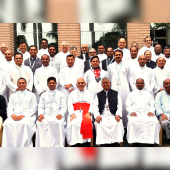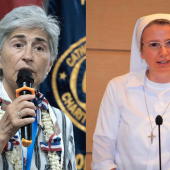Re-discovering the Synodal Church for the Third Millennium
This paper is an enquiry into the origin and prospects of a synodal vision of the Church. Second Vatican Council forged a new vision of the Church, which steered the vision off the predominant juridical conception of the church as a hierarchical perfect society towards a more biblical and missionary vision of the Church as the pilgrim people of God.
However, the new ecclesiologies produced only a shift in emphasis and ‘theological’ vision and no substantial reform in Church
structure or administration happened, that many feel the reform initiated by Vatican II remains an unfinished agenda. Pope Francis has finally taken a bold initiative to bring the ecclesial reforms forward in the direction of synodality – saying that is the future of the Church in the third millennium.
This paper is an enquiry into the prospects of a synodal vision of the Church. We will start by taking a look at the evolution of ecclesiological vision and reforms in the post-Vatican II period and move to a detailed analysis of the Synodal Church proposed by Pope Francis and examine synodality itself and the prospects and challenges of the synodal Church in the third millennium. The synodal Church is a decisive theme for the life and mission of the Church in the third millennium.
Radio Veritas Asia (RVA), a media platform of the Catholic Church, aims to share Christ. RVA started in 1969 as a continental Catholic radio station to serve Asian countries in their respective local language, thus earning the tag “the Voice of Asian Christianity.” Responding to the emerging context, RVA embraced media platforms to connect with the global Asian audience via its 21 language websites and various social media platforms.













